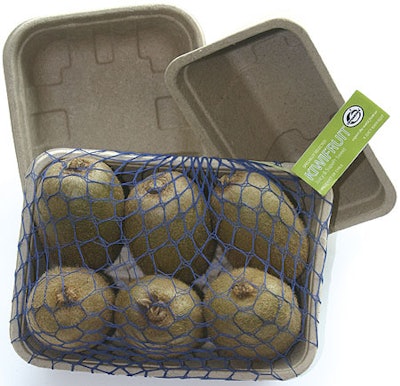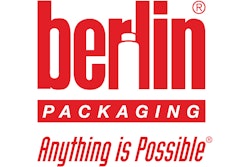This has been a tough year for companies that package their products in petroleum-based containers. First global supplies shrink because of increased demand from China and India. Then hurricanes Katrina and Rita slice through the Gulf States production and delivery infrastructure, bringing increases to the price of resin that have packaged goods manufacturers looking for alternatives.
What are the alternatives to PET, PE, and PP—the petroleum-based plastics most commonly used? Packaging World took a look at one increasingly popular alternative: packaging made from renewable resources. Based on the views gathered for this article, such packaging appears to be suitable for short-shelf-life, single-use packaging applications. While there may still be some cost differential, companies using these materials report the good will generated makes up for any difference and actually spurs greater sales. Industry insiders believe that increasing production will continue to drive down the cost of packaging made from renewable resources.
The state of the industry
Chicago-based Berlin Packaging supplies more than 24ꯠ bottles, jars, caps, closures, pumps, and sprayers to the personal care, pharmaceutical, food, chemical, and beverage industries. The company operates 23 distribution centers across the country.
“Our first association with sustainable materials was in 1993,” Andrew Berlin, president and CEO of Berlin Packaging explains. “We had initial successes with the ICI biopolymer Biopol. The cost at $8 per pound and the fact that it presented a number of manufacturing issues did not impede Dayton-Hudson in the U.S. and Wella in Europe from being the first on the market with a line of shampoo sold in Biopol bottles.
“Over time, however, we found that the green movement in this country seemed to fall by the wayside and post-consumer resins obtained a foothold as companies saw they could statisfy the public’s environmental concerns through recycled materials. We have not used biodegradable resin, nor have marketed it in about seven years. We’ve just not had the demand.”
Berlin believes that his packaged goods customers are not going to initiate adoption until costs become competitive and there is renewed pull for “green” packaging from consumers. He would also sincerely like to see this happen.
“I put my heart and soul into the marketing of Biopol,” he says. “I really believed in it and thought we were doing some good for the environment. But at the end of the day, business is business, and our customers just weren’t willing to pay the premium, not without strong consumer support and interest. I’d love to see sustainable materials do well. We’re in a position to market and distribute them when they do.”
Harald Kaeb, chairman of the International Biodegradable Polymers and Bioplastics Association with headquarters in Berlin, Germany, believes that it will be industry leaders getting behind sustainable packaging, rather than a pull by consumers, that will be the springboard to accelerated adoption.
“Supermarkets and brand owners, especially the big name-brand players, will have the decisive role in the growth of this industry over the next five to ten years,” Kaeb says. “When they understand the public relations value of sustainable materials—the messages of greater energy independence, cleaner soil, fewer air pollutants, and less impact on global warming and land usage—they will endorse this movement and invest in educating consumers in the value to society of these materials. It’s the education piece along with the cost and performance improvements that will take sustainable materials out of niche market status.”
According to Kaeb there are a growing number of sustainable materials performing nicely in niche applications. Many of these materials, he says, can be cost competitive in the future compared to petroleum-based resins including PET, PE, and PP. Competitiveness today can be achieved when special material properties lead to thinner films or reduced processing costs.
“In general, a new polymer requires 30 years from laboratory to becoming a commodity product with millions of tons produced and wide-spread application,” Kaeb says. “By this measure, this industry has twenty years of development behind sustainable materials and is now in the broad market introduction stage.
“What’s needed now is investment in production capabilities that can bring sustainable materials down in cost. Those investments require courage and vision.”
Investment is crucial
Malcolm Cohn is market manager for the Americas at Innovia Films, Inc., a firm that makes packages from cellulose, which is derived from wood pulp. Cohn agrees with Kaeb that investments must continue to be made. He sees the trend toward sustainable materials as a mandate for a world facing increased demand from a finite petroleum resource.
“The world must move to a greater use of sustainable raw materials in all facets of society,” Cohn states. “The issue for developers is that in the short term customers are going to have to pay a bit more to get these materials off the ground and allow further investment for technological improvement. Greater numbers of companies in the supply chain need to stop using a point-blank ‘no additional cost’ as their starting point to packaging decision making, otherwise few organizations will choose to invest in the technology and sustainable packaging will not move forward as rapidly as society requires it to.”
NatureWorks LLC, was among the very first companies to offer a family of commercially available polymers derived 100 percent from annually renewable resources, in this case, corn. Snehal Desai, global commercial director at NatureWorks, discusses the kind of feedback his company receives from customers.
“Brand managers tasked with understanding the economics of bioplastic materials tell us they understand that the cost of the material is competitive,” Desai says. “They also have a lot of questions about how the material will function in their application. We spend a lot of our time directing them to applications where they can find immediate success, from films to thermoformed containers. More complex applications such as multilayer films and aseptic packaging are more challenging due to ‘newness’ of the material in terms of the learning curve of the converters. Those applications are going to take more time to develop an overall functional knowledge within the industry.”
Desai says that from a material supplier’s standpoint this industry feels established. From a brand owner’s and converter’s perspective, however, this still may feel like the early days of market development for a new material. Packaged goods manufacturers may, therefore, not yet have a handle on how the public will react to these materials.
This fall NatureWorks announced its development of gift cards made from NatureWorks PLA (polylactic acid). While not a package, this new product may raise consumers’ general level of awareness and interest in these new materials and possibly lead to greater acceptance and demand. After all, many people may be soon carrying corn-based gift cards in their wallets or purses.
Starch-based biomaterial
Mark Fink is business development manager at Plantic Technologies, an Australia-based firm that makes thermoformed trays from a biomaterial based on starch. Fink feels that the industry has already made considerable progress on the critical issues of consumer and industry awareness as well as the economics of sustainable packaging.
“The weakness in this industry from an adoption standpoint was the cost structure of low-volume material production and the uphill communication challenges of generating widespread interest and awareness among packaged goods manufacturers for a new material,” Fink says. “For the most part, the industry is turning the corner on both of these hurdles. When packaged goods manufacturers, converters, governments, and the public find the motivation to change—whether it’s from high petroleum price, supply scarcity, or environmental impact—then these constituencies are going to find a host of opportunities for materials made from renewable resources.”
Fink’s sentiments seem to capture the general viewpoint of materials suppliers interviewed for this report. But what about the packaged goods companies who are using packaging made from renewable resources? What do they believe?
The Oppenheimer Group of Vancouver, Canada, is now test marketing Earthcycle certified compostable palm fiber prepacks for a variety of fresh produce. Says Cathie MacDonald of Oppenheimer, “Because palm fiber packaging is a sustainable resource, it will be more stable than petroleum-based packaging in terms of cost and supply. This packaging looks absolutely fabulous with our growers’ produce. We believe consumers will respond to the natural appearance of the packs and to the fact that this product is environmentally friendly.”
Reed Paget of Belu Spring Water in the UK says that his company, after testing a 500-mL water bottle made of PLA, is now ready to go into launch mode with the same container. He summarizes Belu’s experience with NatureWorks PLA-based bottles this way: “Cost is always a consideration with all products,” he says. “In time, with volume manufacturing, we anticipate the cost of these PLA-based bottles and label to at least match that of the petroleum-based alternatives. People are ready for packaging that provides them with the products and convenience they desire but does not contribute to the demise of the planet.”
Sonja Tuitele of Wild Oats Markets in Boulder, CO, says, “We transitioned all of our petroleum-based plastic containers in our delis to containers made from corn (dubbed the ‘corn-tainer’ by our staff). We use three sizes of these compostable deli containers for cold salads and entrees, bulk oils, sliced cheeses, and produce. In our juice bars, we also recently introduced PLA drinking cups.”
Certifying biodegradability
Packaging made from sustainable materials is admittedly kinder to the environment in terms of disposals than petroleum-based products—after all, aren’t these products biodegradable? And isn’t this one of the key selling points? Turns out that these materials have different properties that affect how they degrade. And it is important for packaged goods manufacturers and the public to understand their differences.
Some materials are naturally compostable. Others are commercially compostable—these typically require the addition of heat to break down—while still others use special additives that assist in the breakdown of the material. The use of these additives is a hot topic in the industry from an environmental standpoint.
Innovia Films’ Malcolm Cohn explains the potential impact of this issue. “Lack of understanding about sustainable materials is a potential weakness in our industry,” he explains. “Some degradable products are based on plastic with the addition of additives to trigger fragmentation. These so called ‘oxo-biodegradable’ products do not break down effectively in the required timescales for commercial composting units and there is no data showing how long these materials take to fully degrade. They are not certified to ASTM 6400 and not recognized by the Biodegradable Products Institute. These are very different than compostable materials, which are typically derived from renewable material—wood, maize etc.—and will biodegrade ‘back to earth.’”
In terms of package disposal, Cohn believes that one of the industry’s biggest hurdles for the adoption of compostable materials is the lack of curb-side collection and municipal composting facilities. “Municipal composting would ‘complete the circle’ for materials such as NatureFlex which starts out as wood pulp and will degrade back to useable compost material,” he said.
It is a deep concern for the environment and a realization of the marketing benefits that seems to drive the adoption of sustainable materials. David Zutler of BIOTA Brands of America, Inc. Telluride, Colorado explains how he and co-founder Michael Zutler led their company to become the first in the bottled water or beverage industry to use sustainable materials in its packaging.
“When we started development on the bottle, equipment manufacturers advised us to begin with PET and then move to NatureWorks PLA if we were so inclined,” David Zutler said. “We said that if there was a Planet-Friendly™ material we wanted to work to develop it, and we did. Cost was an issue at first, but we had premium spring water and we felt we could absorb the cost through the goodwill advantages of an all natural container. Cost is not an issue today because of the high price of oil. We continue to win business due to our Planet-Friendly stance.”
Zutler’s sentiments were reflected by many involved in this industry. While hurdles seem to remain in terms of cost, manufacturability, and general awareness, those associated with this effort believe that they can do well by doing good, and that this industry is on the cusp of greater demand, application, and innovation.
























